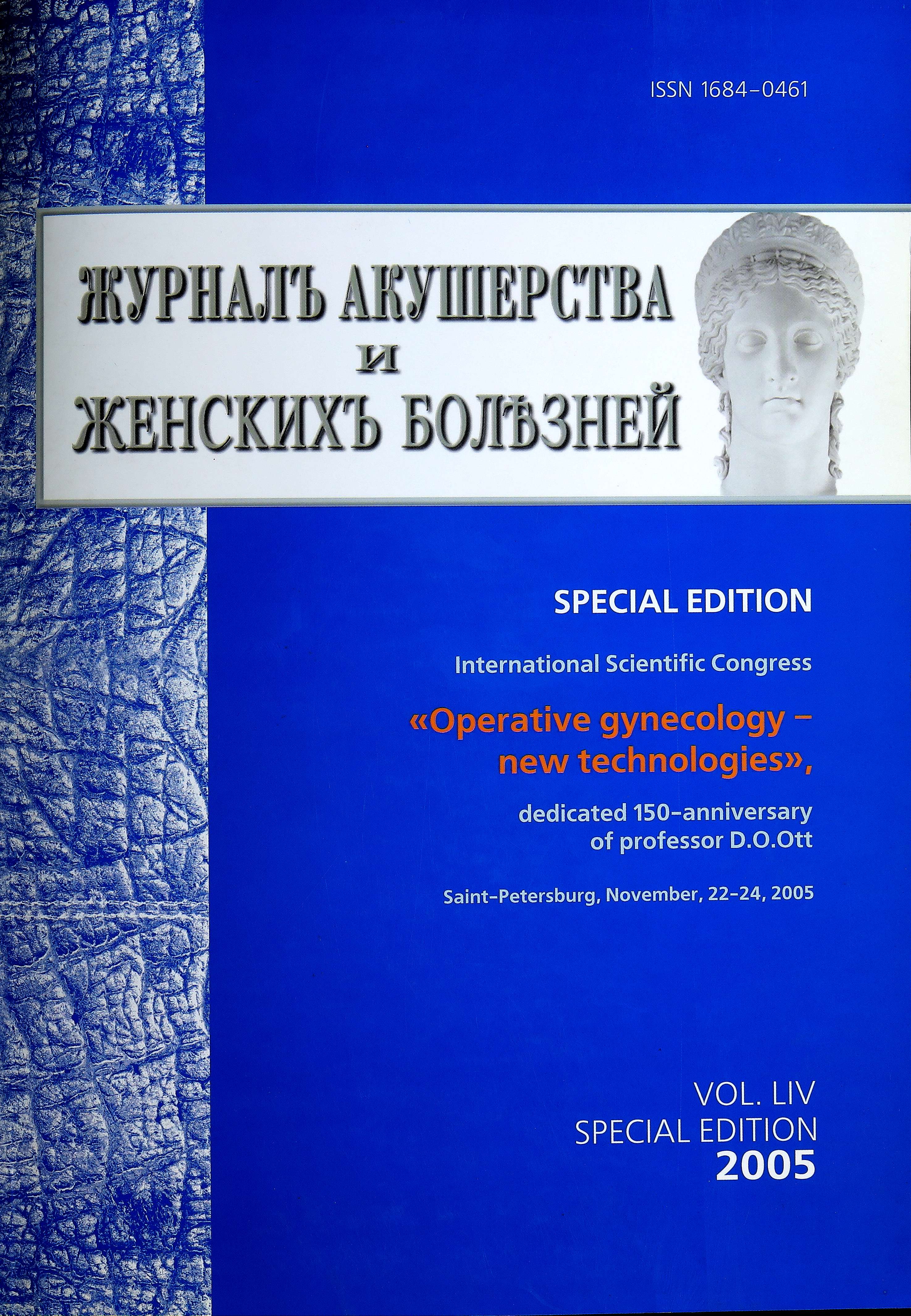Surgical treatment of tubal- peritoneal sterility in patients with hydrosalpinx
- 作者: Kira E.F.1, Lyatoshinskaya P.V.2, Bezhenar V.F.2
-
隶属关系:
- National medical-surgical centre named after N.I. Pirogov of the Ministry of Health of the Russian Federation
- Military-medical academy
- 期: 卷 54, 编号 5S (2005)
- 页面: 24-24
- 栏目: Reviews
- ##submission.dateSubmitted##: 15.11.2005
- ##submission.dateAccepted##: 08.11.2021
- ##submission.datePublished##: 15.11.2005
- URL: https://journals.eco-vector.com/jowd/article/view/87271
- DOI: https://doi.org/10.17816/JOWD87271
- ID: 87271
如何引用文章
详细
Objective: the detrmination of indications and contraindications for reconstructive-plastic surgery of uterine tubes in patient with hydrosalpinx.
Materials and methods. We have operated 159 female patients with tubo-pertironeal sterility, which resulted from existence of hydrosalpinx. All patients were underwent salpingoneostomy with application of laparoscopic (n=122) or microsurgical (n=47) technique. In 26 cases the microbiopsy of ampullar part endosalpinx of uterine tube with subsequent investigation of its ultrastructure by method of light and electronic microscopy (microscope “Hitachi”, Japan) was performed.
全文:
Objective: the detrmination of indications and contraindications for reconstructive-plastic surgery of uterine tubes in patient with hydrosalpinx.
Materials and methods. We have operated 159 female patients with tubo-pertironeal sterility, which resulted from existence of hydrosalpinx. All patients were underwent salpingoneostomy with application of laparoscopic (n=122) or microsurgical (n=47) technique. In 26 cases the microbiopsy of ampullar part endosalpinx of uterine tube with subsequent investigation of its ultrastructure by method of light and electronic microscopy (microscope “Hitachi”, Japan) was performed.
Results. There were found no reliable distinctions in results of operations, performed with using of laparoscopic and microsurgical technique. Thus, the frequency of pregnancy occurrence after laparoscopic operations was 30,4% (34 of 112), and after microsurgical - 29,8% (14 of 47; p>0,05). The mean period of time between the operation and pregnancy occurrence after laparoscopy was 5,4 ± 0,4 months, and after microsurgical operation - 4,5 ± 0,5 months (p > 0,05). However, application of laparoscopic technique is more justified, because it allows to reduce intraoperative hemorrhage, the duration of intervention, number of postoperative complications and time of hospital stay.
Conclusion. There were revealed the following unfavourable factors reduced the probability of uterine pregnancy occurrence: hydrosalpinx diameter more than 1 cm, rigid wall of uterine tube, presence of evident adhesive process in pelvic cavity, previous uterine tubes surgery, the age of the patient more than 30 years and duration of sterility more than 5 years. At the same time the most prognostic value for occurrence of uterine pregnancy is hydrosalpinx diameter and uterine tube thickness. Thus, the frequency of uterine pregnancy occurrence in patients, who had hydrosalpinx over 1 cm in diameter and thick wall of uterine tube didn’t exceed 9,2%. At the same time in ultrastructure of hydrosalpinx of these patients there were revealed deep irreversible dystrophic changes, resulted in functional imperfection of uterine tubes.
作者简介
E. Kira
National medical-surgical centre named after N.I. Pirogov of the Ministry of Health of the Russian Federation
编辑信件的主要联系方式.
Email: info@eco-vector.com
俄罗斯联邦, Moscow
P. Lyatoshinskaya
Military-medical academy
Email: info@eco-vector.com
Department of obstetrics and gynaecology
俄罗斯联邦, Saint-PetersburgV. Bezhenar
Military-medical academy
Email: info@eco-vector.com
Doctor of Medical Sciences, Professor, Department of obstetrics and gynaecology
俄罗斯联邦, Saint-Petersburg参考
补充文件





